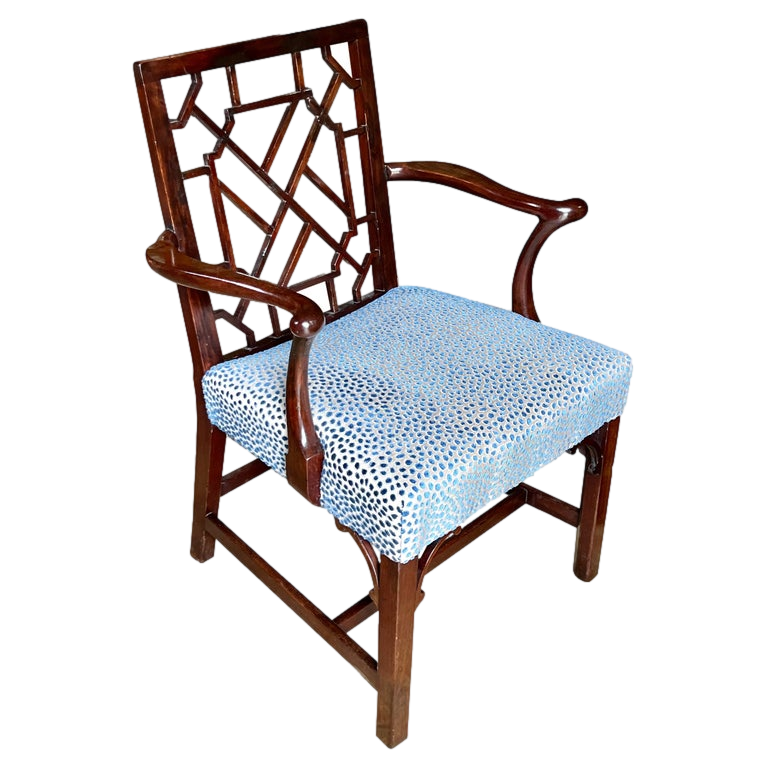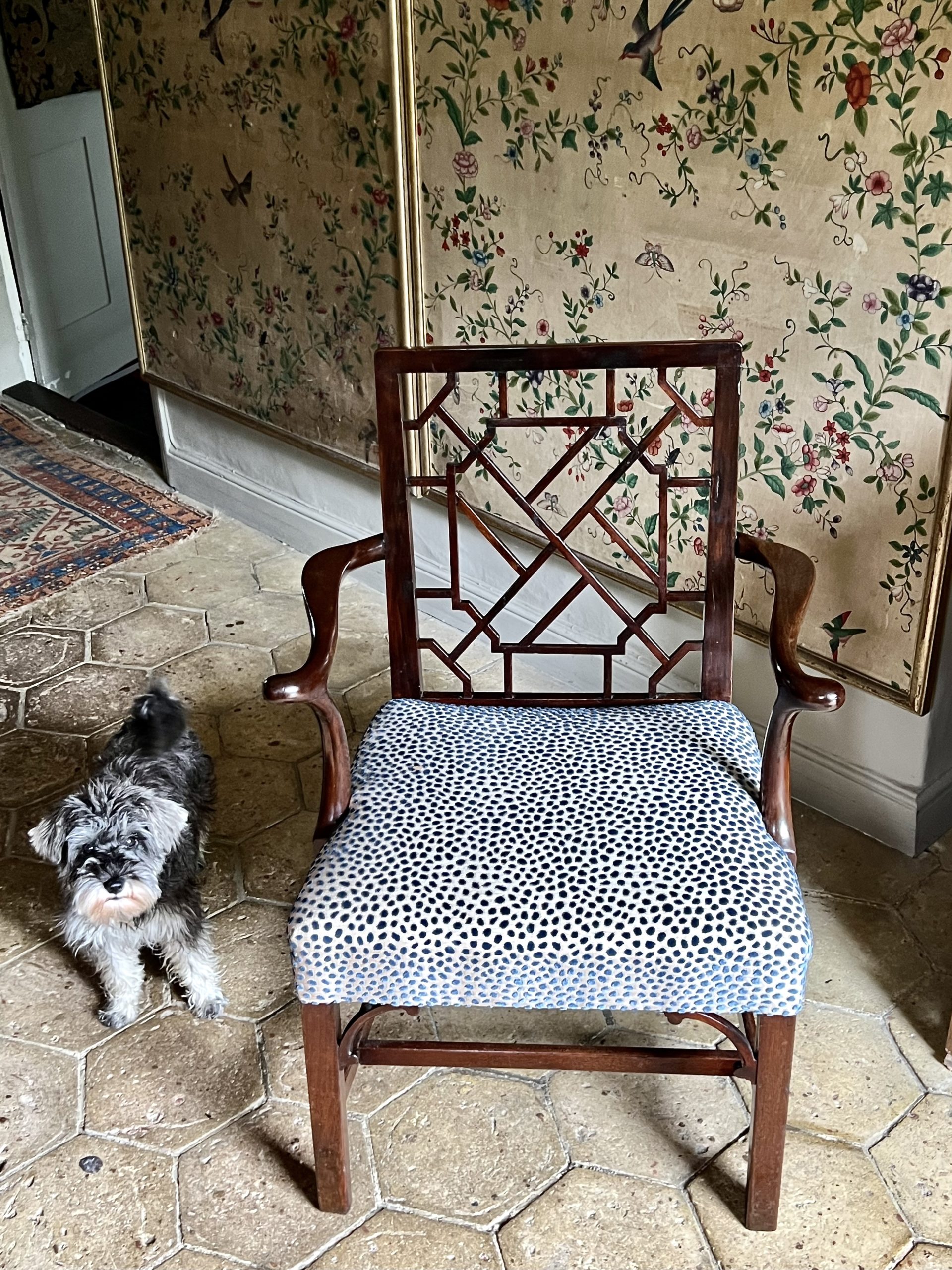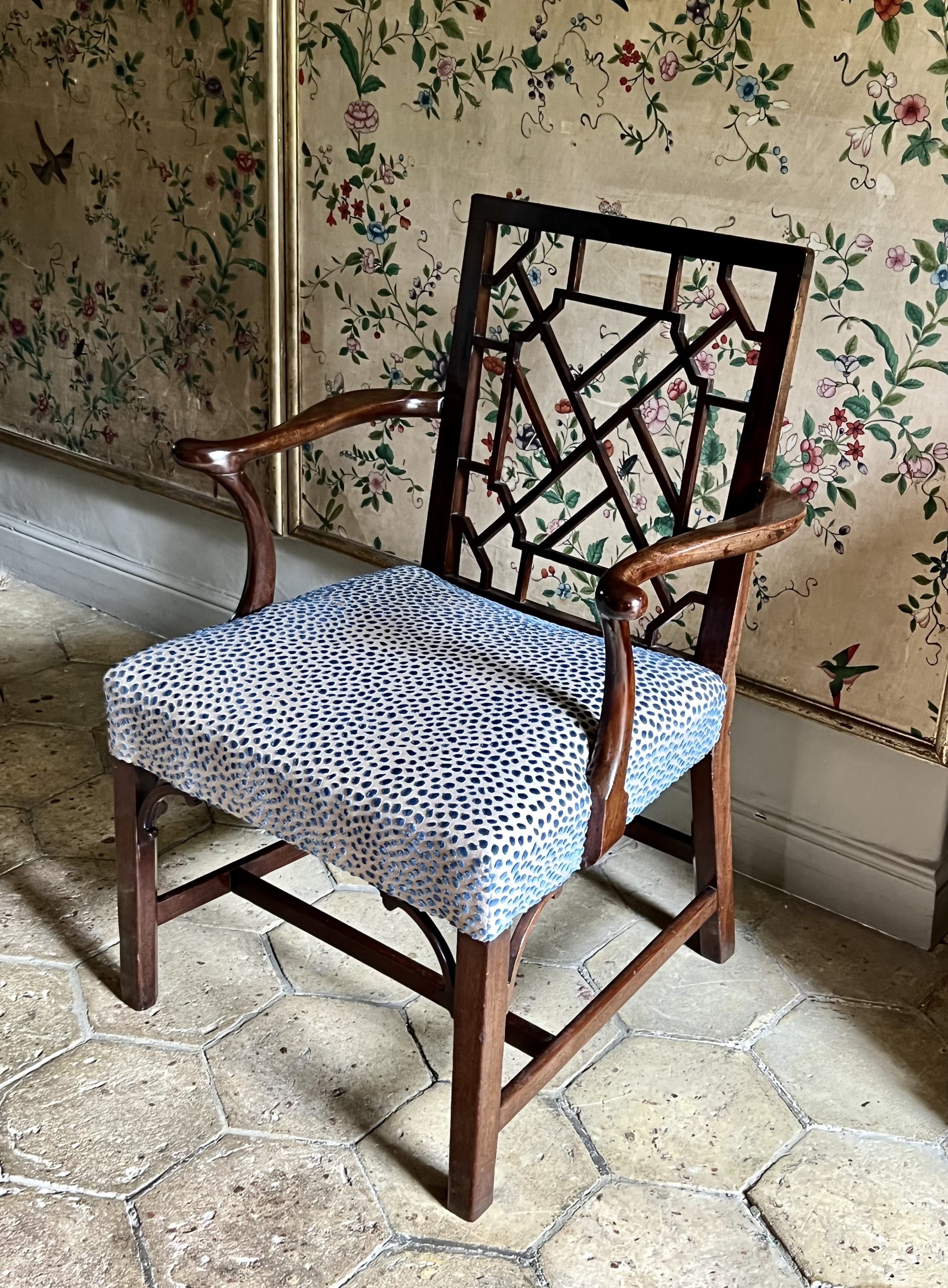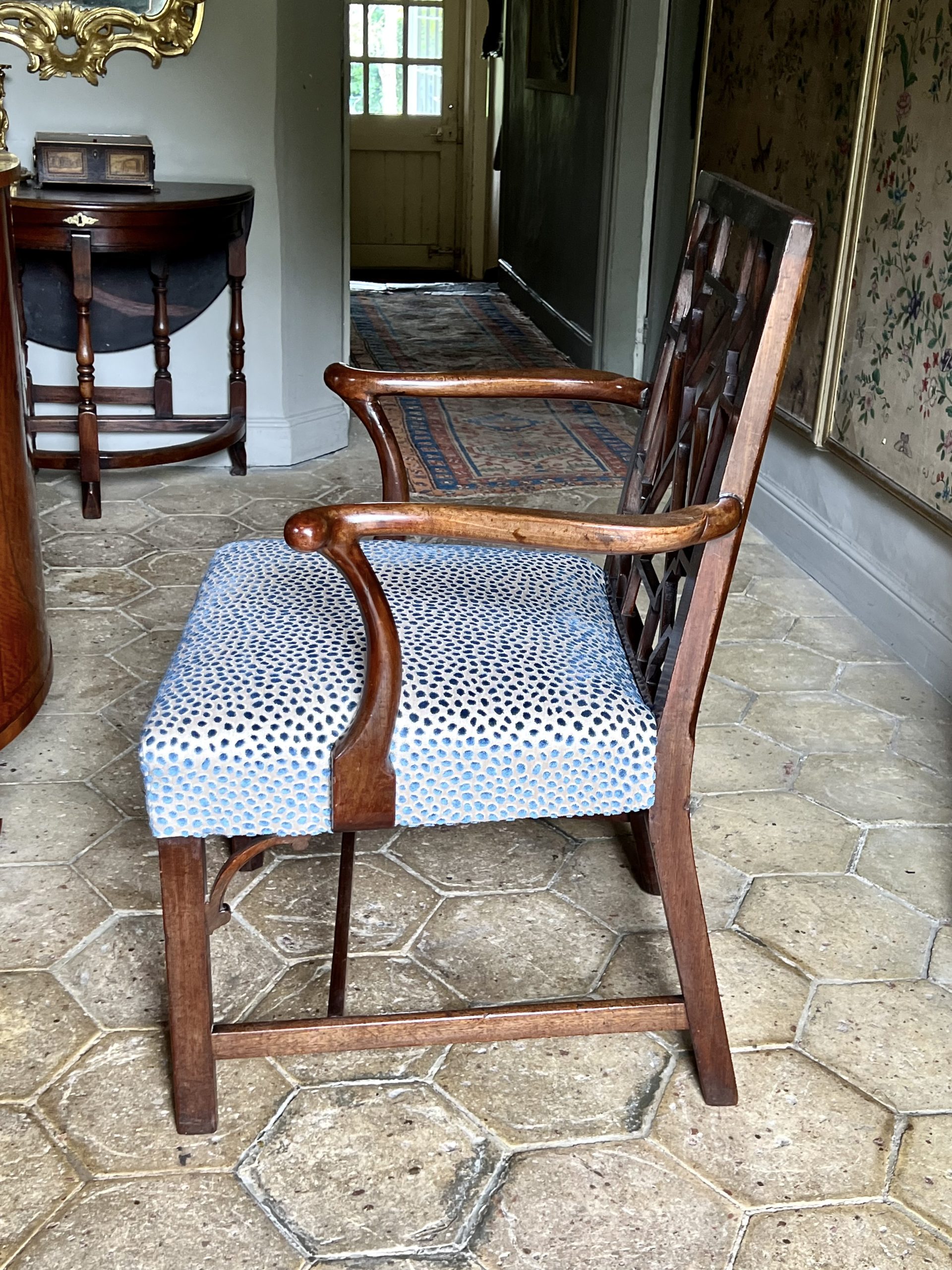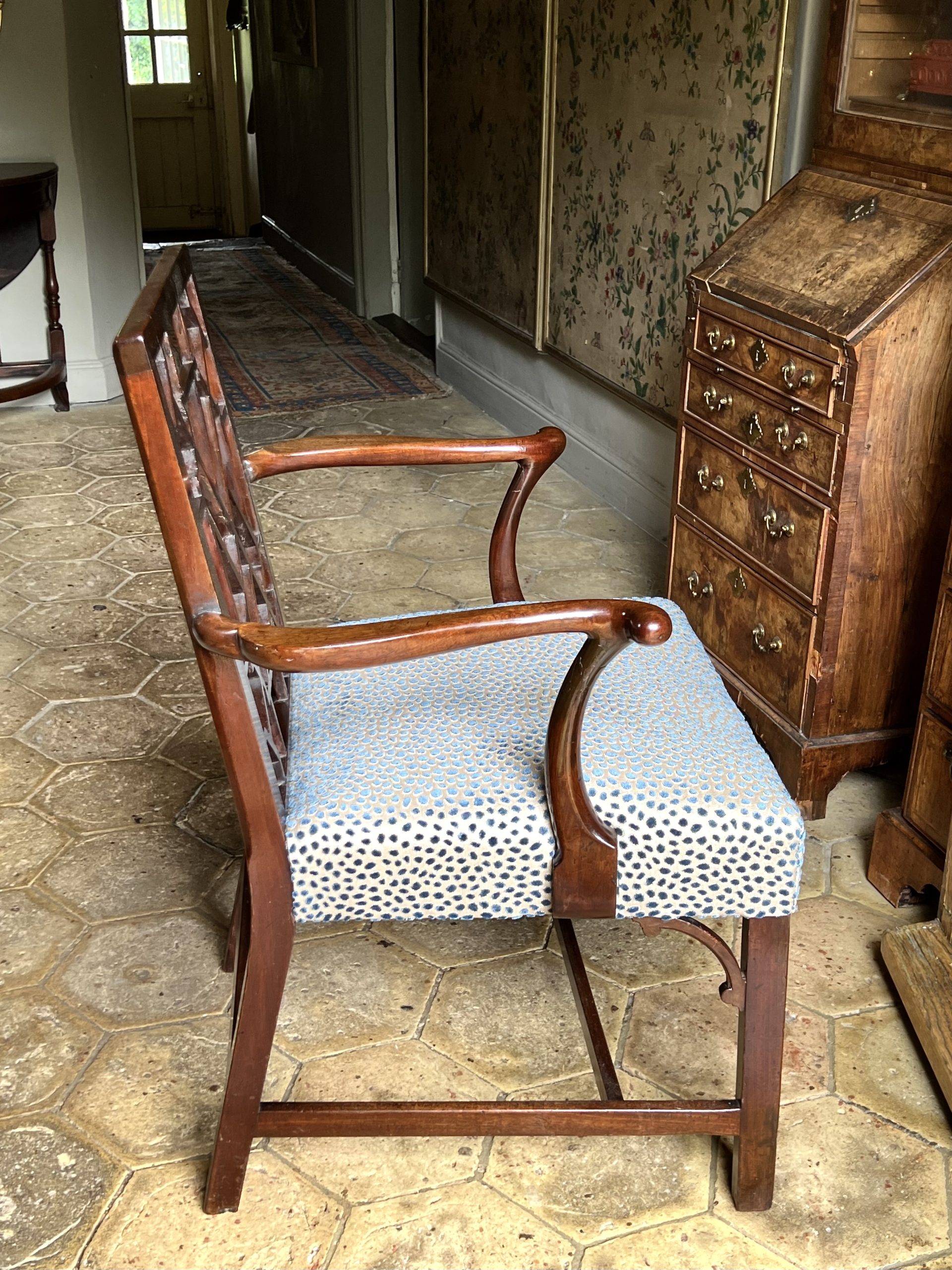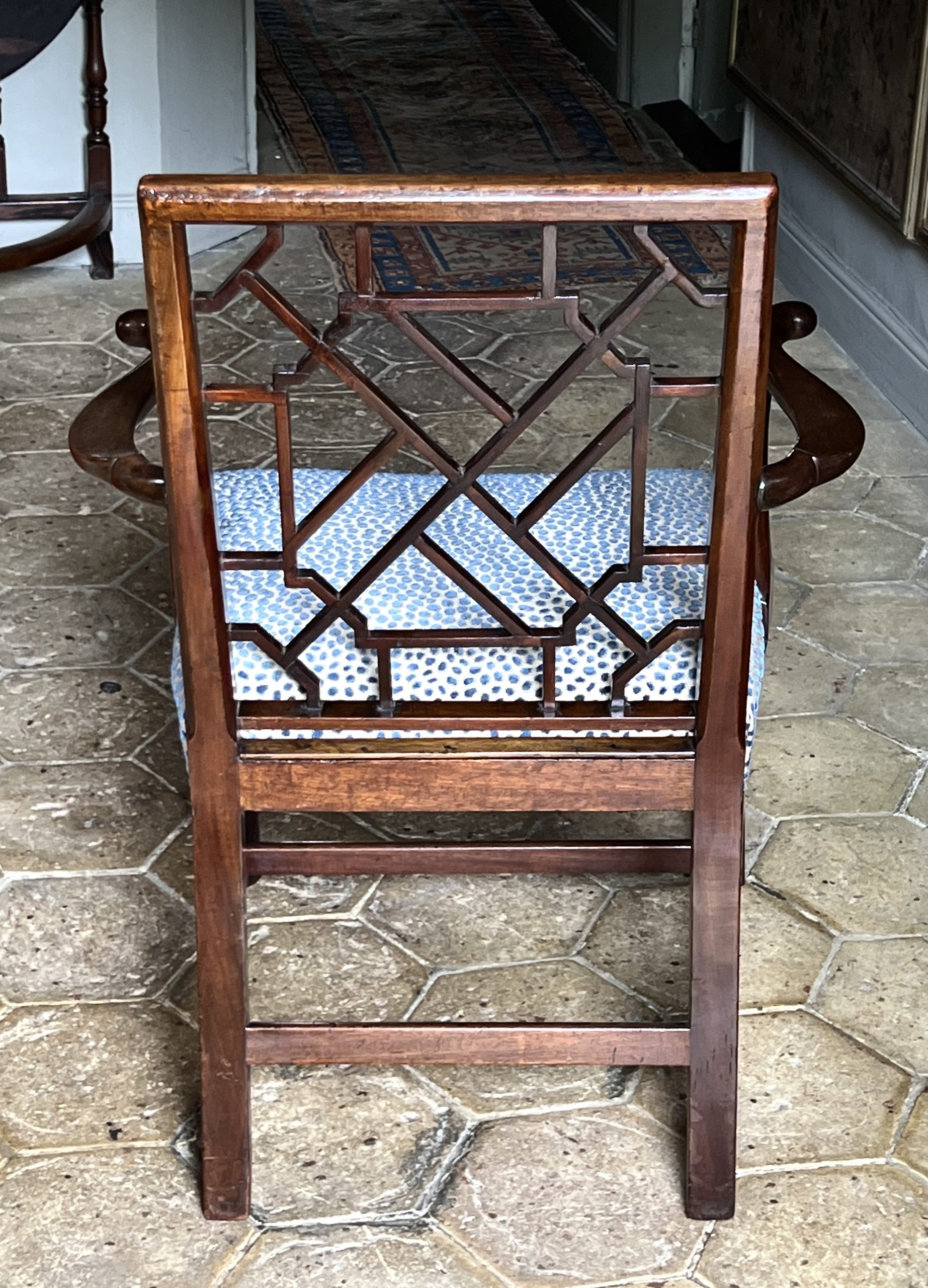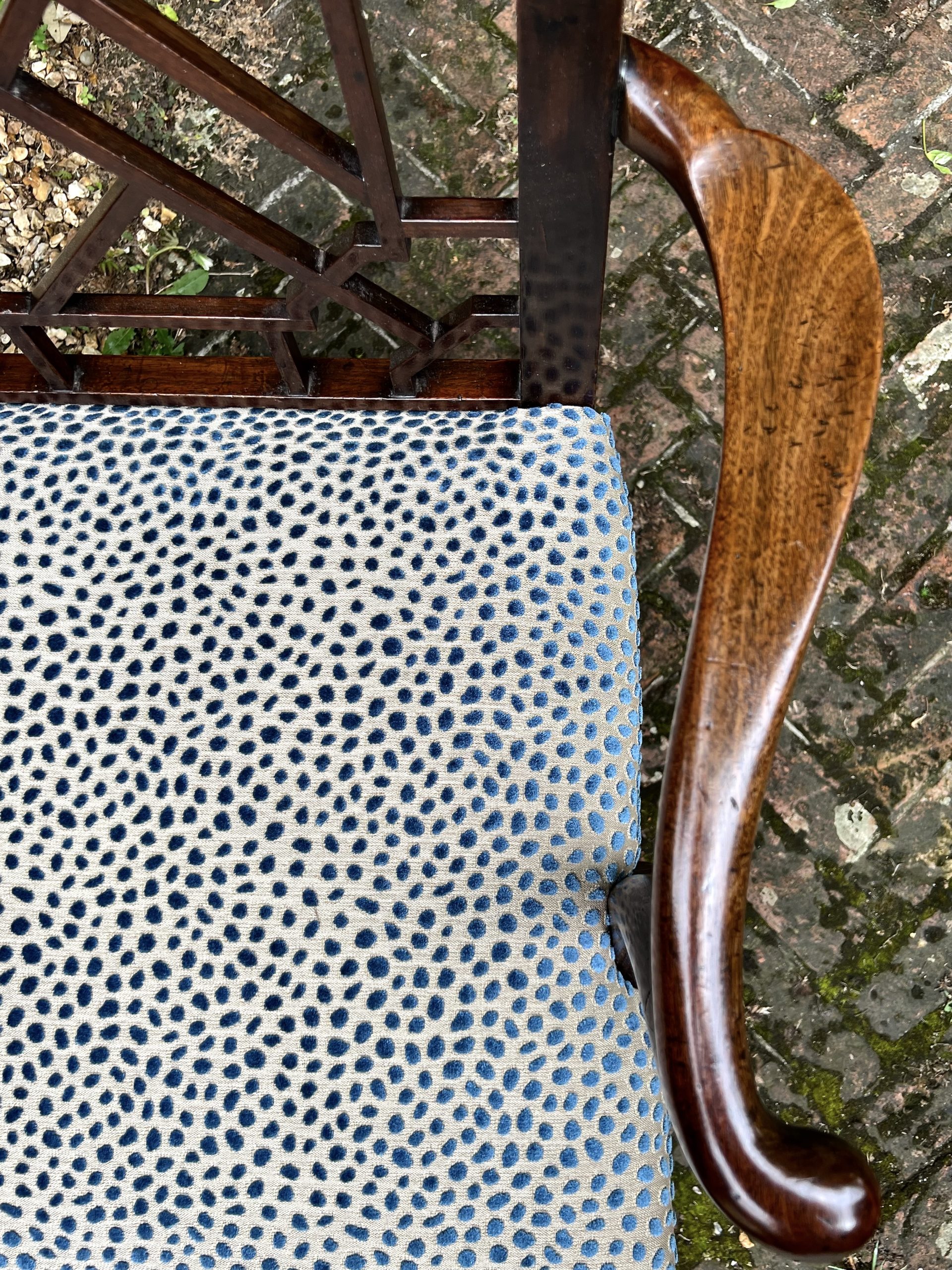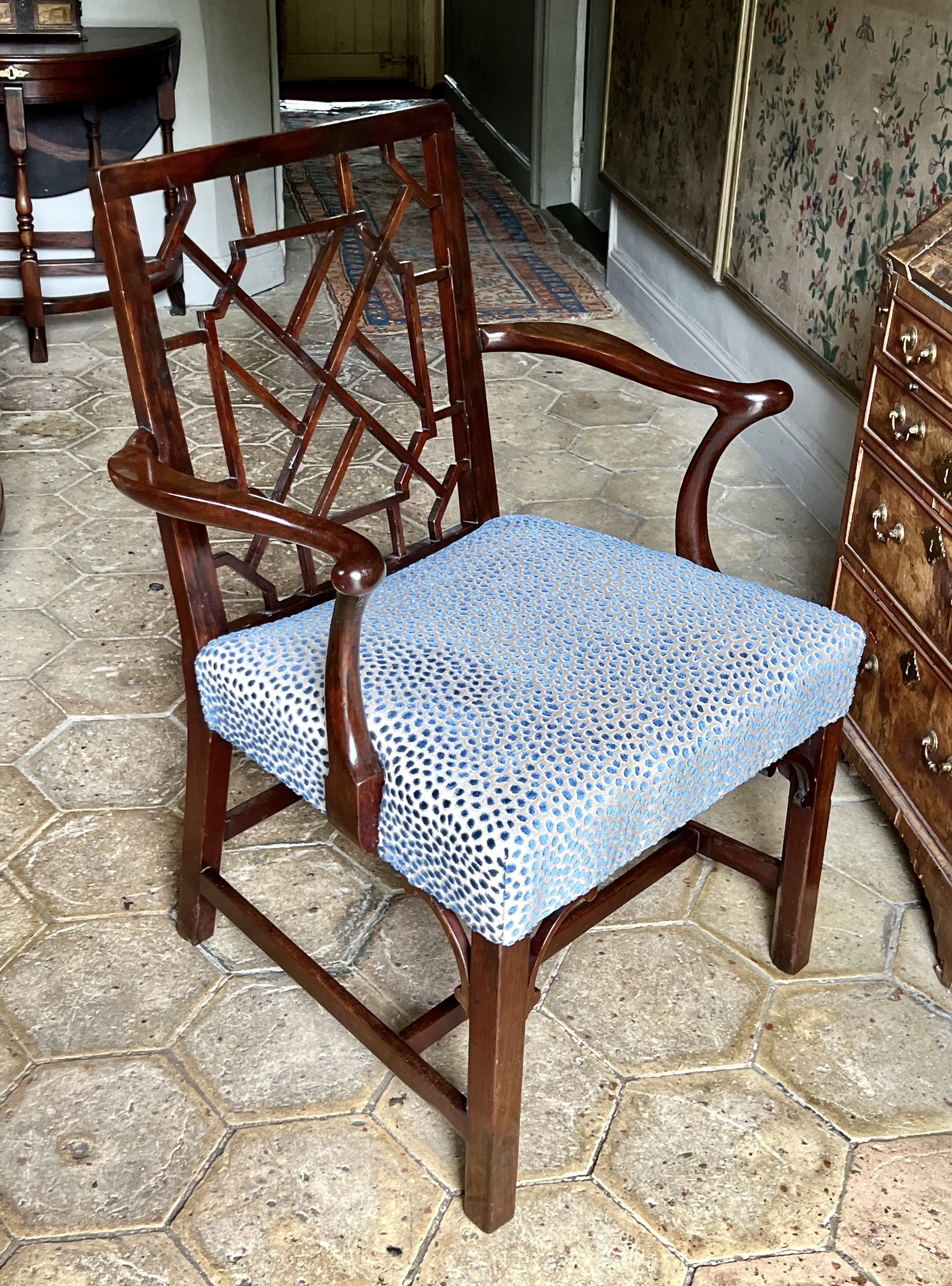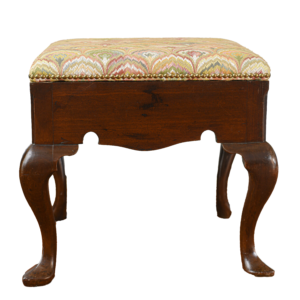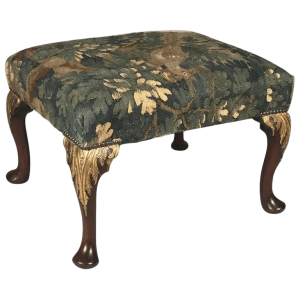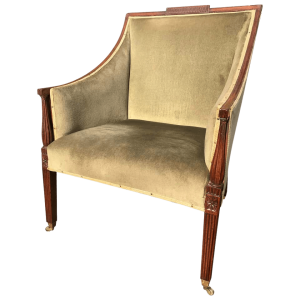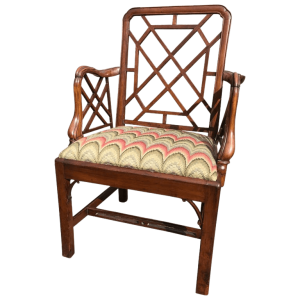Description
An 18th-century mahogany Cockpen armchair. George III period, ca 1762.
A rare and stylish antique Cockpen armchair in mahogany, ca 1762. With chinoiserie open-fretwork frame and angle brackets.
Some very minor historic restorations entirely commensurate with age – in excellent condition throughout. Sturdy in all its joints and ready-to-use. Now covered in fine upholstery.
Nb. There are numerous late-19th and 20th-century copies of this design. Ours on offer here, however, is a sophisticated Georgian desk chair (or occasional armchair) of good colour and patination.
Literature:
Christopher Gilbert, The Life and Work of Thomas Chippendale, p. 101, fig 167.
Ralph Edwards CBE FSA, A Shorter Dictionary of English Furniture, Hamlyn, London (Fourth Impression 1972) p. 150, ill. 132, documents a similar armchair dated circa 1765.
Thomas Arthur Strange, English furniture, pp. 133, 156 & 157.
Thomas Chippendale, Director, ill. XXVI.
Percy Macquoid, A History of English Furniture, The Age of Mahogany, London (1908) ill. 682.
Ralph Edwards CBE FSA, Georgian Cabinet-Makers, London (1955) p. 136, fig. 88.
Interestingly, Percy Macquoid RI in A History of English Furniture – The Age of Mahogany, illustrates a very similar mahogany armchair, Bracken, London (1904-1908) p. 298, fig. 682. Property of the Duke of Beaufort. ”One of a set and particularly pleasing in shape; it corresponds in design to the table fig. 676.”
Sebastian Pryke, The 18th Century Furniture Trade in Edinburgh.
Sebastian Pryke, Cockpen Quest, Country Life, 29th April 1993.
The family pew of the Earls and Marquesses in Cockpen Church formerly contained examples in this manner.
A more intricately designed latticework chair was produced by Thomas Chippendale,
and became known as the ‘Chinese Chippendale’ style.
Chippendale’s 1762 Director includes several plates depicting the chair style, and 2 pages of “Chinese Railings”.
Blind- and open-‘fretwork’ throughout the mid-18th century repeats this pattern of asymmetrical intersecting lines.
Although the “Cockpen chair” thrived in Scotland during the second half of the 18th century,
the term Cockpen appears not to have been used during this period.
Cockpen-area furniture derives its name from the Cockpen and Carrington Parish Church, Bonnyrigg, near Edinburgh, Scotland.
Cockpen & Carrington Parish Churchhttps://www.church.cockpen.co.uk
The Church is situated in a rural setting in the Cockpen area to the South East of Bonnyrigg on the B704.



